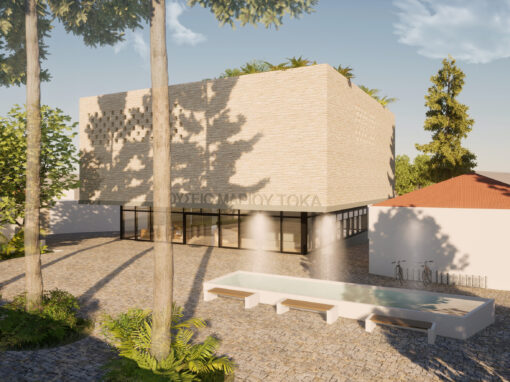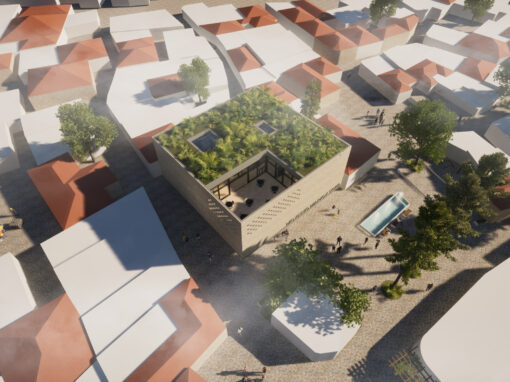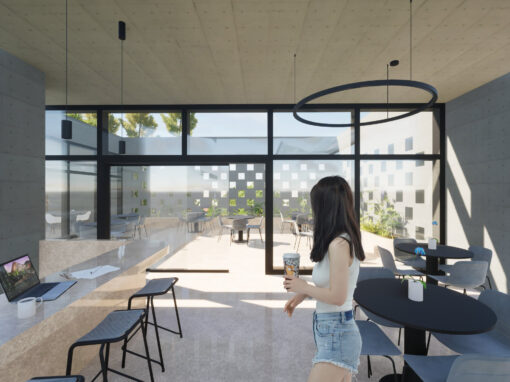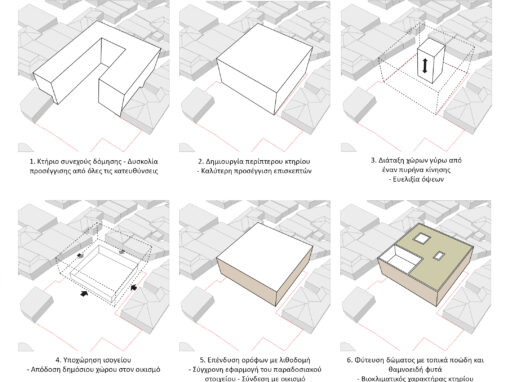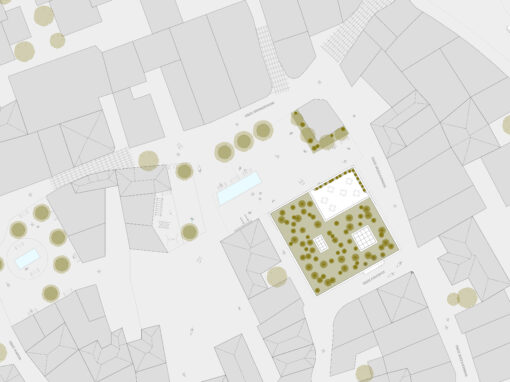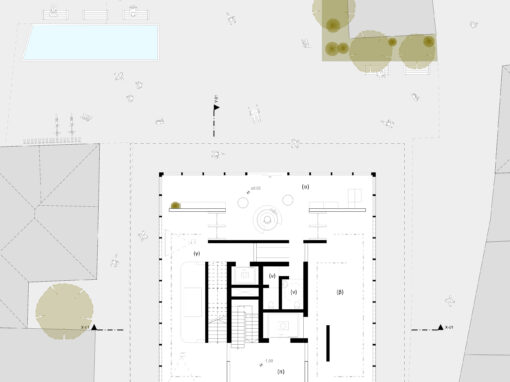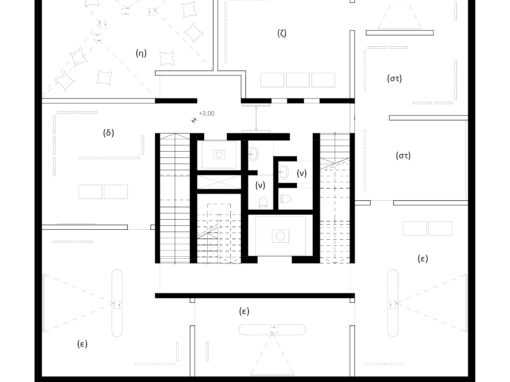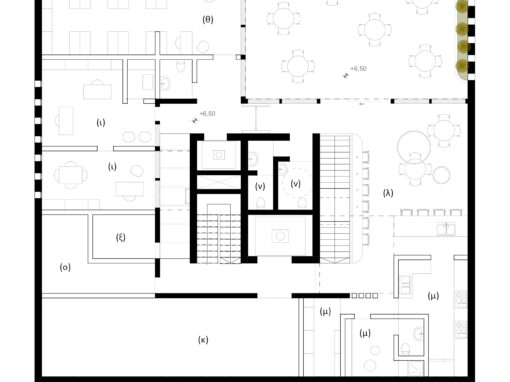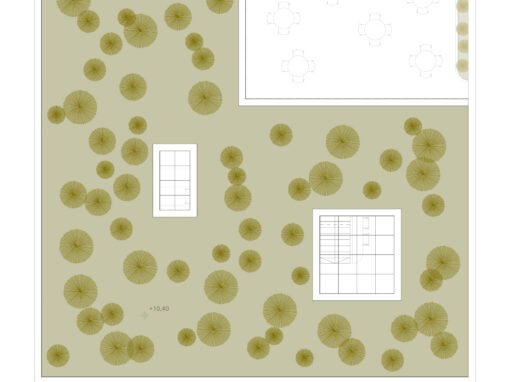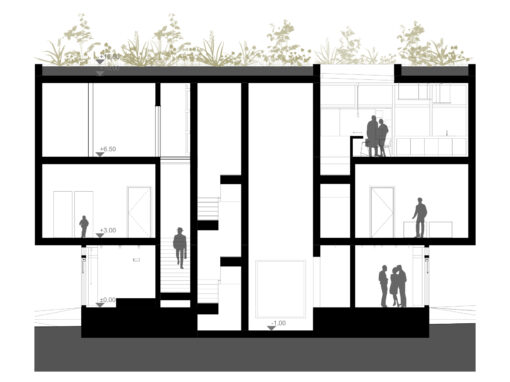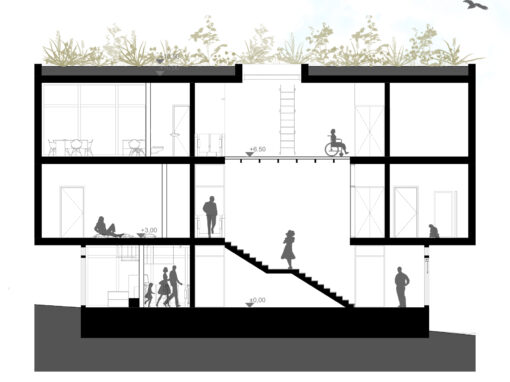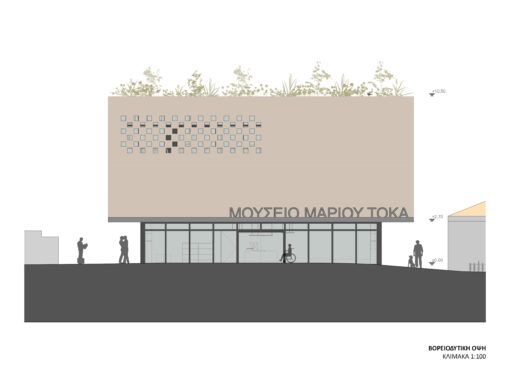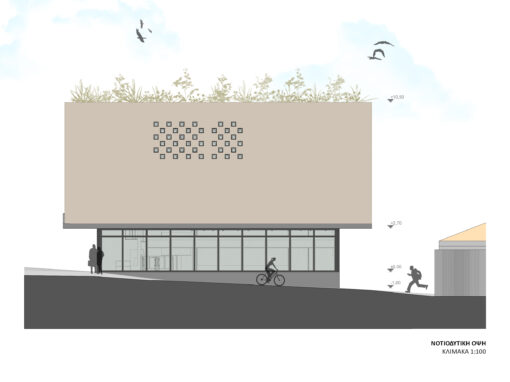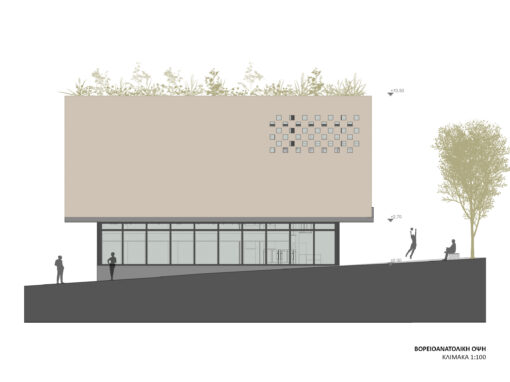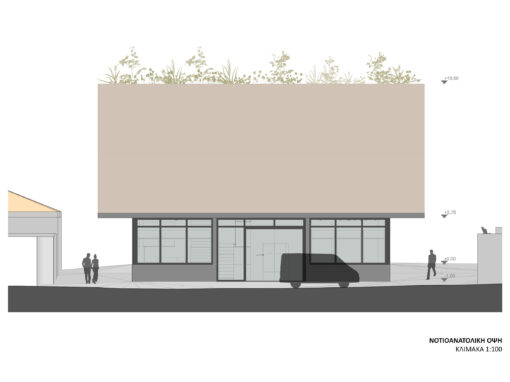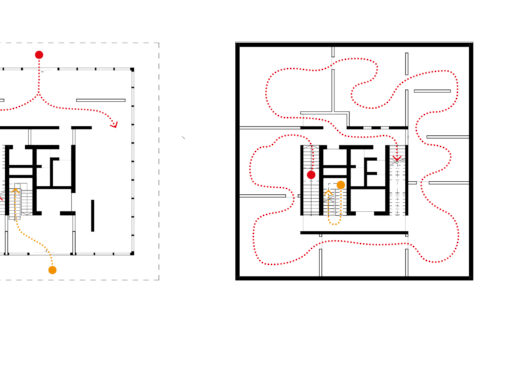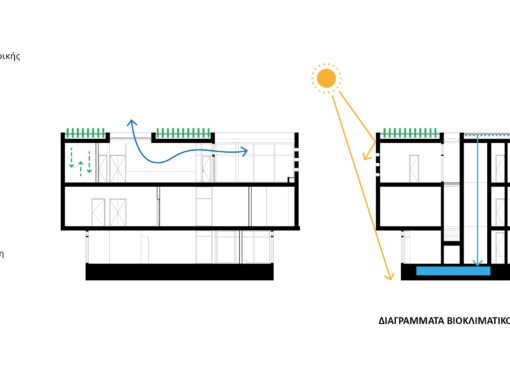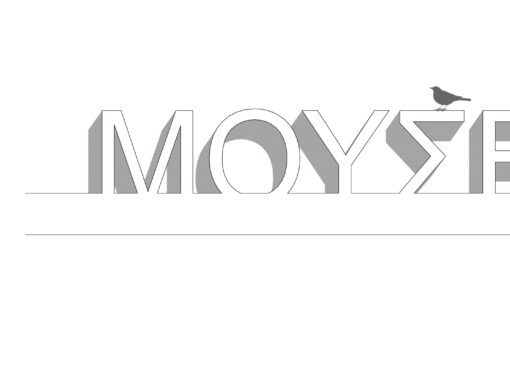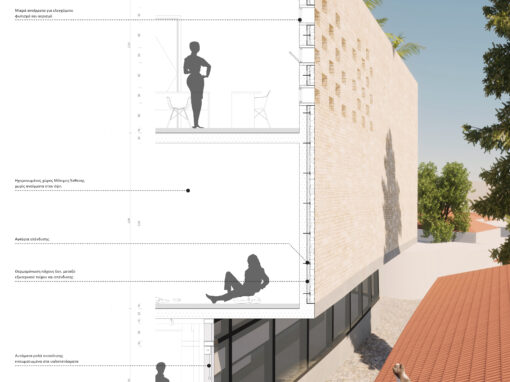
YEAR
2024STATUS
DesignSITE AREA
700 sq.m.BUILD UP AREA
950 sq.m.TYPE
MuseumLOCATION
Ypsonas, Cyprus
Marios Tokas Museum in Ypsonas Municipality
architecture | culture and education | urban and landscape
YEAR
2024STATUS
DesignSITE AREA
700 sq.m.BUILD UP AREA
950 sq.m.TYPE
MuseumLOCATION
Ypsonas, Cyprus
After a careful analysis of the study area and the accesses to the given plots, it was decided, based on the unhindered access of visitors from all possible directions to the in-design square and by extension to the new museum, not to implement the continuous building system that characterizes the village. Instead, it is proposed to be placed centrally and to create a pavilion, which will receive visitors from every possible direction.
In contrast to the chaotic development of the area’s buildings, the new museum was decided to have a shape as simple as possible. For this reason, the cube was chosen, which, in combination with the distance it takes from the neighboring buildings, creates peacefulness. The spaces are arranged around a core of vertical and horizontal movements, which leads to flexibility in the configuration of the facades.
On the ground floor, the building recedes to give more public space to the village, while glazing is chosen for its facades; an element that gives transparency and unifies the public space with the interior of the museum, inviting the passer-by to enter and get to know it. The entrance is flush with the new square on the northwest side, so that the museum’s reception area is a natural continuation of it.
The connection of the new building with the traditional village is made, mentally and visually, with the application of the characteristic stonework of the area on the facades of the upper floors. In complete contrast to its usual application on the ground floor of traditional buildings, the choice to use it only on the upper floors, indicates a bold contemporary approach that does not try to imitate traditional architecture, but attempts to transform the technique into the new era.
Finally, the roof is planted with native species of flora, contributing to the effective insulation of the building and the natural regulation of its internal temperature. In addition, it increases green spaces, in an area characterized by minimum planting. Access to the roof, for maintenance purposes, is via a service vertical ladder, located in the staff corridor of the second floor.
